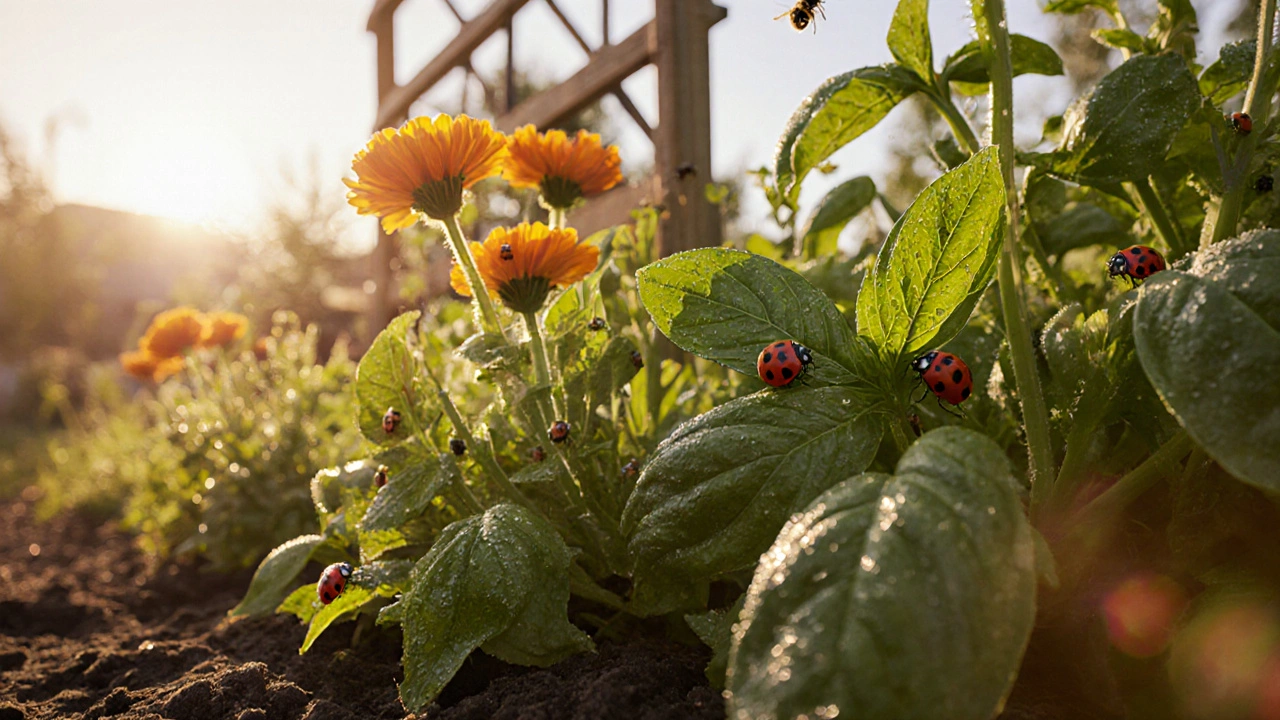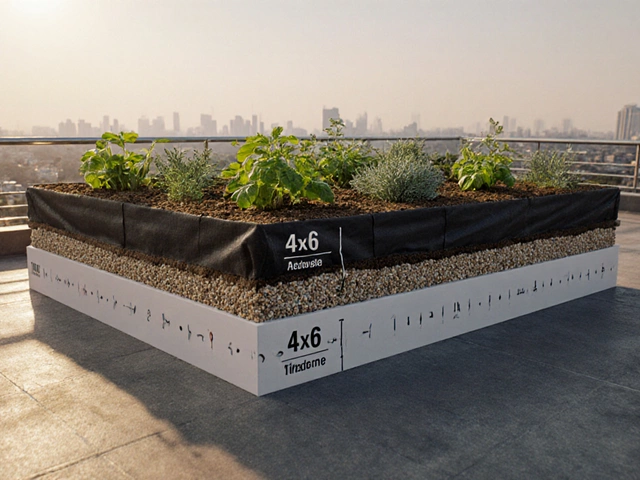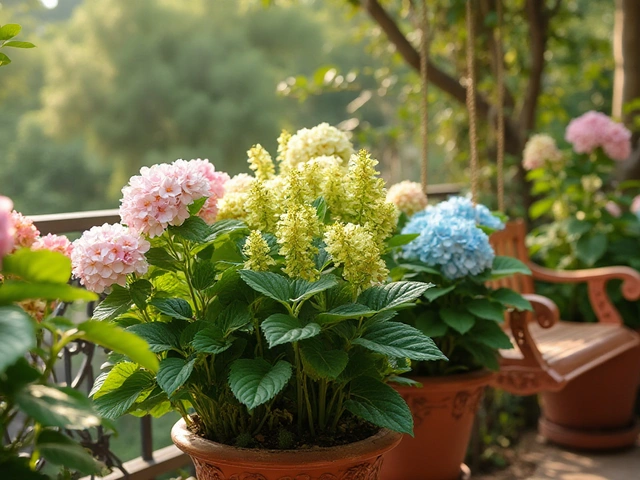Pest Identification & Treatment Matchmaker
Identify Your Pest
Select the pest you're dealing with to get the best natural control solution from our garden guide.
Recommended Natural Solution
Quick Takeaways
- Natural pest control relies on plants, minerals, and beneficial insects instead of synthetic chemicals.
- Three pantry staples-garlic, soap, and cayenne-can become powerful insect sprays.
- Physical barriers like diatomaceous earth work instantly against crawling pests.
- Companion plants such as marigold and basil deter flies, aphids, and nematodes.
- Keep a natural pest control checklist handy to stay ahead of infestations.
What is Natural Pest Control?
When it comes to keeping your garden healthy, natural pest control is a set of environmentally friendly methods that manage insects and other pests without synthetic chemicals. It leans on botanical extracts, mineral powders, living allies, and smart cultural practices. The goal isn’t to wipe out every bug-only the ones that hurt your plants.
Why DIY?
Doing it yourself lets you tailor treatments to the exact pests you see, cuts costs, and keeps unwanted residues out of your soil and water. Plus, mixing your own sprays gives you control over concentration, timing, and the scent that attracts pollinators.
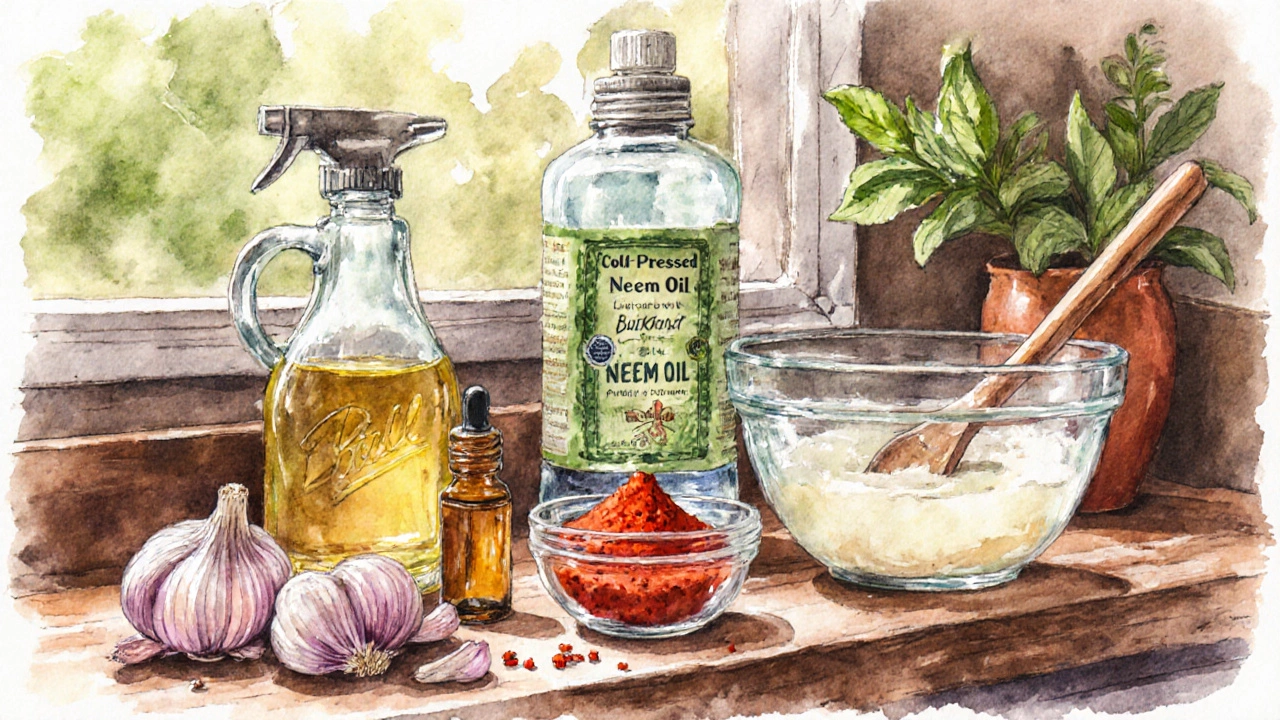
Core DIY Strategies
- Botanical Sprays: extracts from neem, garlic, and essential oils that disrupt pest feeding.
- Physical Barriers: powders like diatomaceous earth or sticky traps that trap or dehydrate insects.
- Biological Controls: releasing ladybirds, predatory nematodes, or encouraging indigenous spiders.
- Companion Planting: pairing crops so that one repels pests that target the other.
- Cultural Practices: crop rotation, proper watering, and sanitation to remove breeding sites.
Make Your Own Botanical Sprays
Below are three proven recipes using items most households already have.
Garlic‑Cayenne Spray
- 1 cup water
- 2 cloves garlic, minced
- 1 tsp cayenne pepper
- 1 tsp liquid horticultural soap
- Blend, let sit 24hours, strain, then dilute with 1L water.
Apply every 5‑7 days on leaf undersides. Works best against aphids, spider mites, and whiteflies.
Neem Oil Emulsion
- 1tbsp cold‑pressed neem oil
- ½tsp liquid horticultural soap
- 1L warm water
- Mix until oil droplets are evenly distributed.
Spray in the early morning or late afternoon. Effective against caterpillars, leaf miners, and scale insects.
Essential‑Oil Breeze
- 10ml peppermint essential oil (or 5ml rosemary)
- 1tsp liquid horticultural soap
- 1L water
- Shake well before each use.
Great for repelling ants, aphids, and fruit flies.
Application Tips & Safety
- Test any spray on a single leaf first; wait 24h for signs of phytotoxicity.
- Use a fine‑mist sprayer to ensure coverage of leaf undersides.
- Apply when the temperature is below 30°C and no rain is forecast for 12hours.
- Store homemade mixtures in a cool, dark place; label with preparation date.
- Wear gloves and eye protection when handling powders or concentrated oils.
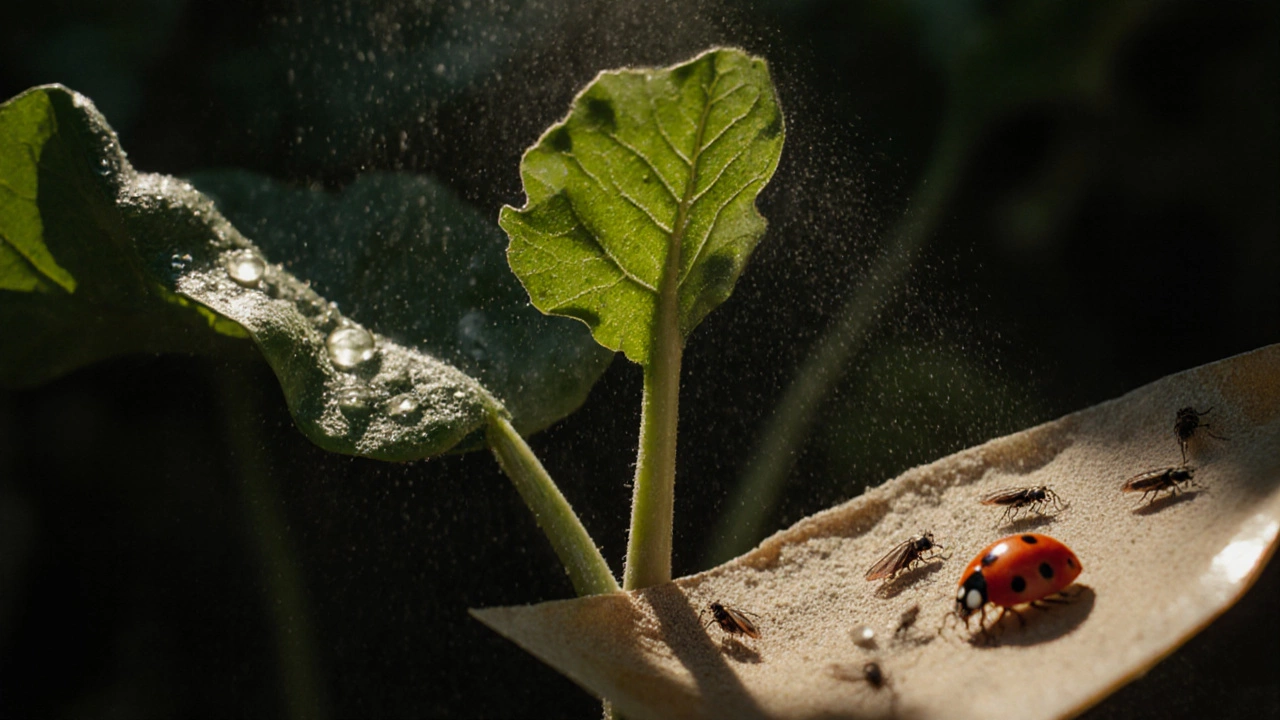
Comparison of Popular DIY Methods
| Method | Active Ingredient | Target Pests | Application Frequency | Safety Rating (1‑5) |
|---|---|---|---|---|
| Neem Oil | Azadirachtin | Aphids, caterpillars, whiteflies | Every 7‑10days | 4 |
| Garlic‑Cayenne Spray | Allicin & capsaicin | Aphids, spider mites, thrips | Every 5‑7days | 5 |
| Diatomaceous Earth | Silica fossil fragments | Slugs, snails, beetles | Reapply after rain | 5 |
| Sticky Traps | Adhesive surface | Whiteflies, fungus gnats, thrips | Replace every 2‑3weeks | 5 |
| Beneficial Insects | Predatory species (ladybirds, parasitic wasps) | Aphids, scale, mealybugs | Seasonal release | 4 |
Common Pests & the Best DIY Match
Identify the culprit first-treatment works best when it’s targeted.
- Aphids: Garlic‑Cayenne spray or ladybird release.
- Slugs & Snails: Sprinkle diatomaceous earth around plant bases.
- Whiteflies: Sticky traps combined with neem oil foliar spray.
- Spider Mites: Peppermint essential‑oil spray; increase humidity.
- Caterpillars: Neem oil early in the larval stage.
DIY Natural Pest Control Checklist
- Inspect plants weekly for signs of feeding or damage.
- Record pest type, location, and severity.
- Choose a treatment that matches the pest and growth stage.
- Prepare the spray or barrier according to the recipe.
- Test on a single leaf; wait 24h.
- Apply under optimal weather conditions.
- Re‑inspect after 48h; repeat if needed.
- Refresh physical barriers after rain or wind.
- Rotate crops or introduce companion plants the next season.
Frequently Asked Questions
Can I use regular kitchen pepper instead of cayenne in the garlic spray?
Yes. Black pepper works, but cayenne provides more capsaicin, which is a stronger feeding deterrent for soft‑bodied insects.
Is diatomaceous earth safe for pets and beneficial insects?
Food‑grade diatomaceous earth is considered safe for mammals, birds, and reptiles. It can still harm beneficial insects that crawl over the treated surface, so apply it only where pests are most active, like around slug refuges.
How often should I re‑apply neem oil during a hot summer?
During periods above 30°C, increase frequency to every 5‑7days because UV breaks down the active azadirachtin faster.
Do companion plants replace the need for sprays?
They dramatically reduce pressure but rarely eliminate it. Use companions as a baseline strategy and add sprays when you spot an outbreak.
Can I store homemade sprays for the whole season?
Most water‑based mixes stay effective for 2‑4weeks if kept in a cool, dark container. Add a small amount of soap as a preservative and label the preparation date.
